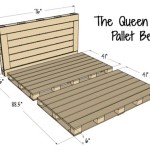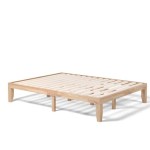How To Install A Raised Garden Bed On A Slope
Installing a raised garden bed on a slope presents unique challenges compared to installation on level ground. Proper planning and execution are crucial for stability, effective drainage, and a thriving garden. This article outlines the necessary steps to successfully install a raised garden bed on a slope, ensuring a beautiful and productive gardening experience.
1. Assessing the Slope and Choosing a Location
The first step involves a thorough assessment of the slope. Determine the steepness of the incline, as this will influence the chosen construction method. Gentle slopes often require less complex solutions than steeper inclines. Consider the sun exposure at different points on the slope. Vegetable gardens generally require 6-8 hours of direct sunlight daily, while other plants may thrive in partial shade. Analyze the soil composition and drainage. Sloped areas can be prone to erosion or water runoff, so amending the soil or implementing drainage solutions might be necessary.
Once the slope has been assessed, choose the optimal location for the raised bed. Consider the accessibility for maintenance, including watering, weeding, and harvesting. Also, factor in the proximity to a water source to simplify irrigation. Mark the chosen location with stakes and string to visualize the bed's footprint.
2. Preparing the Site and Building the Foundation
Site preparation is critical for a stable and level raised bed. Begin by removing any existing vegetation, rocks, and debris from the marked area. For gentle slopes, a simple leveling process might suffice. Remove soil from the higher side of the slope and add it to the lower side until a relatively level surface is achieved. However, for steeper slopes, terracing or retaining walls become necessary.
Terracing involves creating stepped levels on the slope. Cut into the slope at the desired height of the raised bed, creating a level platform. The excavated soil can be used to backfill the lower side of the terrace. Retaining walls offer a more substantial solution for steeper slopes. Constructing a retaining wall along the downslope side of the raised bed will create a level area for the bed and prevent soil erosion. Materials for retaining walls can range from treated lumber to concrete blocks or stones.
Once the slope is leveled or terraced, build a solid foundation for the raised bed. This can be achieved by laying down a layer of gravel or crushed stone within the marked area. This layer improves drainage and prevents the bed from settling unevenly over time.
3. Constructing the Raised Bed Frame
The choice of materials for the raised bed frame depends on personal preference, budget, and the desired aesthetics. Common options include treated lumber, cedar, composite lumber, or even recycled materials like plastic lumber or metal roofing. Treated lumber is a cost-effective and durable option, while cedar offers natural rot resistance. Composite lumber provides longevity and requires minimal maintenance.
Cut the chosen material to the desired dimensions of the raised bed. Assemble the frame using appropriate fasteners, such as screws or nails designed for outdoor use. Ensure the corners are square and securely fastened. For added stability, consider using metal corner brackets or reinforcing the corners with additional bracing. The height of the raised bed is determined by the desired planting depth and the specific needs of the plants.
If using lumber, ensure that it is treated for ground contact to prevent rot and decay. For added protection, consider lining the inside of the frame with landscape fabric. This will further prevent soil erosion and deter weeds from growing into the bed.
4. Filling the Raised Bed and Planting
Once the frame is constructed, fill the bed with a high-quality soil mix specifically formulated for raised beds. Avoid using garden soil directly from the ground, as it may compact and not provide adequate drainage. A good soil mix typically consists of a blend of topsoil, compost, and other organic matter. This combination provides essential nutrients, promotes good drainage, and creates a healthy environment for plant growth.
Fill the bed to within a few inches of the top, leaving space for watering and mulching. Once the bed is filled, water the soil thoroughly to settle it. After the soil has settled, add a layer of mulch to help retain moisture, suppress weeds, and regulate soil temperature. Common mulch options include wood chips, straw, or shredded leaves.
Finally, plant the desired plants according to their specific needs and spacing requirements. Water the plants thoroughly after planting and continue to monitor their water needs throughout the growing season.
By following these steps, a stable, productive, and aesthetically pleasing raised garden bed can be successfully installed on a slope, maximizing the potential of even challenging terrain.

How To Build An Organic Raised Bed On A Sloped Yard Deeply Southern Home

How To Build An Organic Raised Bed On A Sloped Yard Deeply Southern Home

Raised Bed Vegetable Garden On A Slope Gardening Healthy Alyona

Raised Bed Vegetable Garden On A Slope Gardening Healthy Alyona

How To Build An Organic Raised Bed On A Sloped Yard Deeply Southern Home

Can You Grow A Raised Bed Garden On Slope Gardening Channel

Raised Bed Vegetable Garden On A Slope Gardening Healthy Alyona

Building A Terraced Garden On Hill Tejas Farm

Raised Bed Vegetable Garden On A Slope Gardening Healthy Alyona

How To Build An Organic Raised Bed On A Sloped Yard Deeply Southern Home







